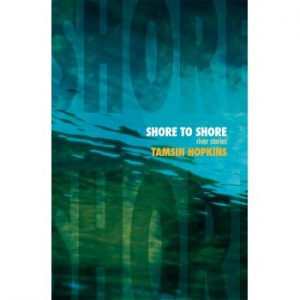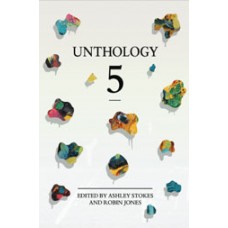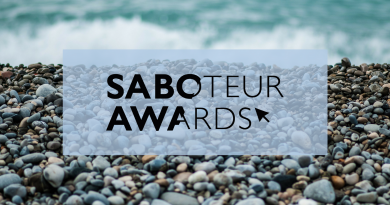Shore to Shore: River Stories by Tamsin Hopkins
-Reviewed by Cath Barton-
Hani is a hot-air balloon pilot, but not in a setting or situation which most of us will expect. From the first sentences of ‘Hani’s Baby’, the opening story in Tamsin Hopkins’ collection Shore to Shore, I was engrossed, drawn by the sense of something unexplained. The author is skilful in the way she measures the tension through Hani’s journey, from his ‘half-dreading the smell that wasn’t there yet’ through his flight over the valley of the Nile, until he walks away from his balloon which has become a ‘limp flap of skin taking on the contours of the earth’ and the purpose of the journey is revealed.
This is a collection of stories united by rivers, and in different ways the flow of water is central to each of them. In ‘Orphaline’ a woman who has lost her memory walks the canals of north London, ‘those concrete ditches with their thick water’, but her thoughts keep returning to Switzerland and to its snow and the unseen melt-water beneath:
Snow. Water has so many forms. I can feel it, as though under my skin. The mountains are riddled with escape routes down to the Rhine; the melting rivulets find them all.
In this story water is a metaphor for the layers of a woman’s personality, for what is known and unknown.
The water of the canal in ‘The Tow Path’ has ‘turned green and scummy’, and its stagnant quality is perhaps also a metaphor, here for the sorrows of a life peeled back by an encounter on the tow path of the title.
In ‘Cenotes’, the central story of Shore to Shore, the action takes place in and around mysterious waters in deep natural holes in the Yucatán peninsular of Mexico. A note at the start of the story tells the reader that these waters were used by the Maya as a place of sacrifice. The tension established by that statement is carefully spooled out through the story through the thoughts of young Ramón as he works with a group of Germans, visitors who are filming in the underground caverns. This long short story is well-paced, the picture it paints vivid. Here, for example, a description of the wooden platform above the waters of the cenote:
The wood was slimy from sun block, which the tourists were not supposed to wear because of the special ecosystems that every single cenote had, but they did and if it got busy, their perfume made the water taste of chemicals, like the air in Cancún; like money.
Tamsin Hopkins takes us to different parts of the world in her stories and one of the strengths of her writing is the specific and consistently strong sense of place which she creates. In ‘Day of the Dead’ the action shifts between Peru and the Lot valley in France and the two environments are well differentiated. The imagery is this story is also strong – almost too strong to stomach in fact, but this author is never gratuitous in what she says or how she says it.
Strong and shocking imagery is similarly present to good effect in ‘Joanna Brown’, the story of a woman in nineteenth century London who has been abused time and again, a woman trying to regain some measure of control over her life as she labours on the banks of the Thames.
Shore to Shore is a very varied collection and Tamsin Hopkins is a writer whose mind is clearly sparking with myriad ideas, ranging from the love life of a sand sculptor and explorations with the tarot in ‘Sand Tranny’ to river creatures re-imagined in anthropomorphic regal style in ‘Inundation’. If anything, she risks overwhelming the reader with too many ideas and strands in some of her stories. My favourites in this collection are those which take a single narrative line enriched with the colours of description and characterisation, especially ‘Hani’s Baby’ and ‘Cenotes’, both models of clarity which show this writer at her best.

Reviewed by Cath Barton — Cath Barton’s prize-winning novella The Plankton Collector (2018) is published by New Welsh Rarebyte and her second novella, In the Sweep of the Bay (2020), by Louise Walter Books. Cath is also active in the on-line flash fiction community.
Photo © Toril Brancher
Twitter: @CathBarton1 | Website: cathbarton.com






